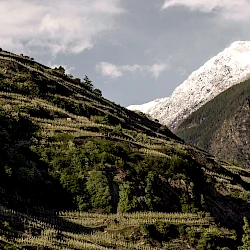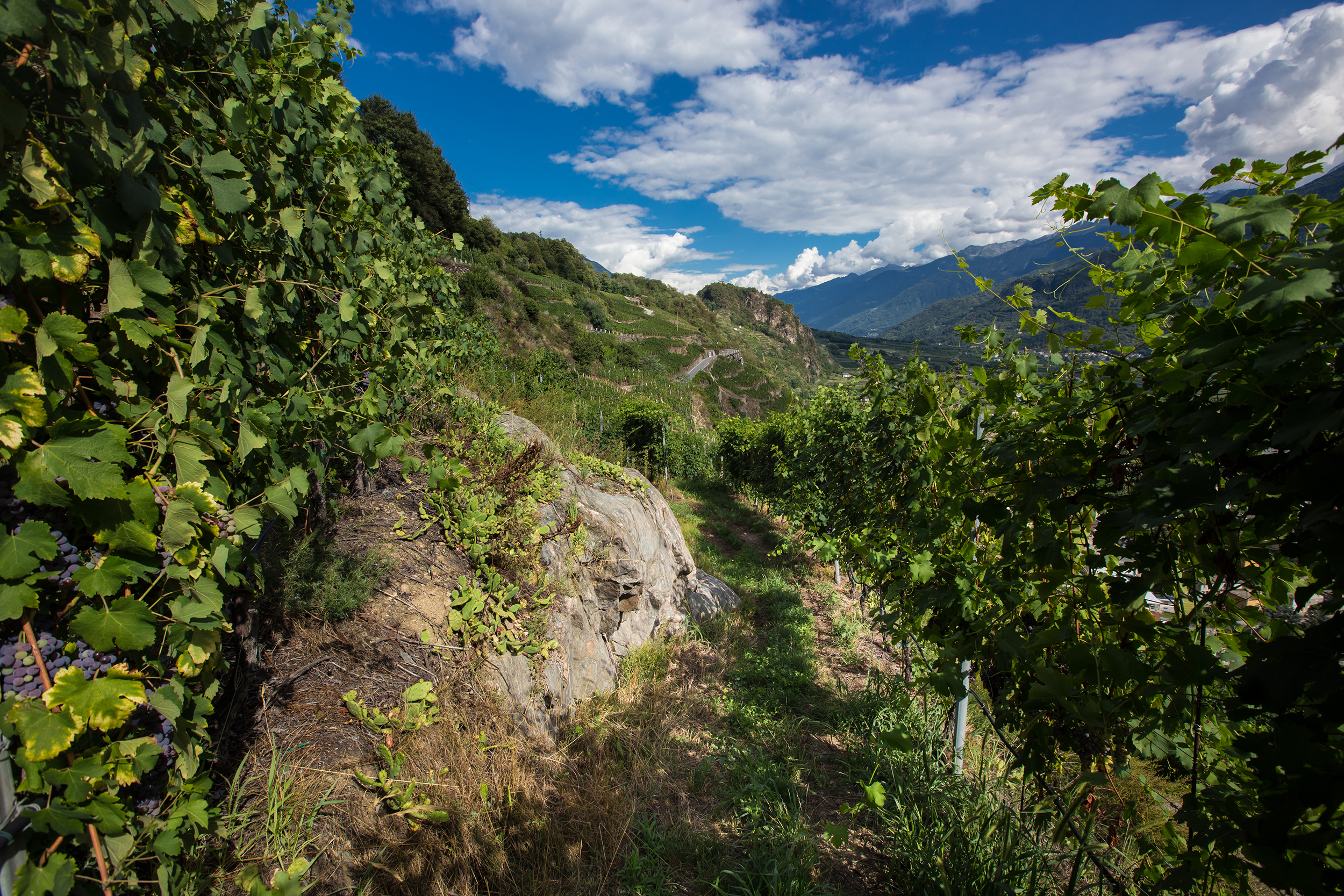
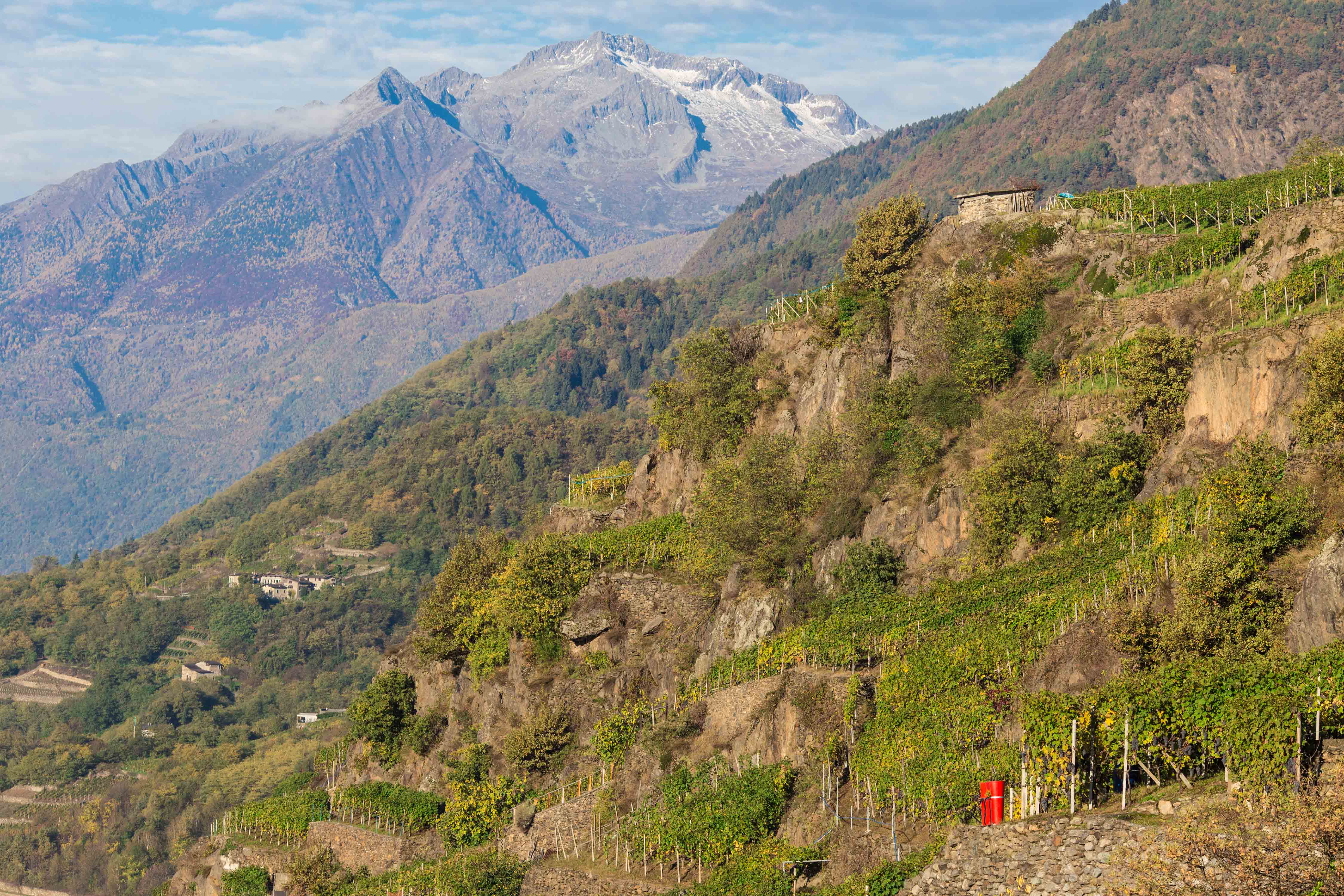
The landscape of Valtellina is beauty, harmony, a union of perfectly combined elements.
The Rhaetian mountainside is an example of the architecture of the rural world, marked by a succession of dry stone walls, but it is not only that.
Walking along the terraces it’s possible to admire a rich heritage of rural artifacts such as small steps-tzapel-, well, containers for water collection, fountains, shelters,paving stones, paths, rural houses, tool cabins as well as fruttai, historic rooms for grape drying; key points for a territory thought and built by the man and his never ending and sustainable relationship with the rock.
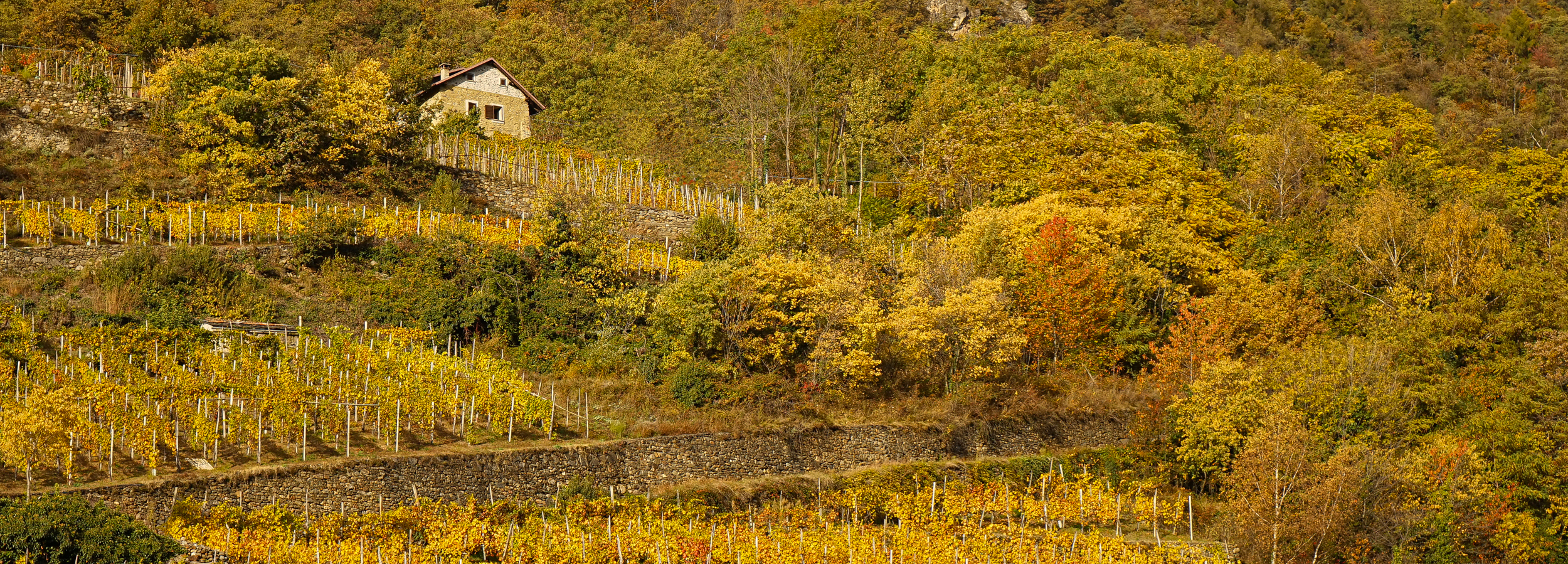
If we observe Valtellina vineyard from the bottom to the top we can spot traces of the wood, a symbolic integration between agriculture and nature but also some wounds represented by the abandoned vineyards, not to mention little villages, stone buildings,old sinks, shrines, frescoes and churches.
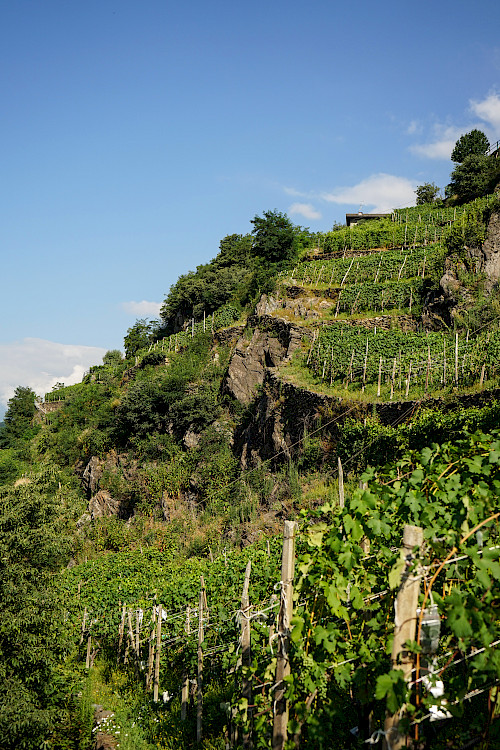
The rock is the common denominator of Valtellina’s geological system, the main ingredient of the soil and, consequently, of the wine.
At the base we can find sedimentary rock material, originating from different glaciations enriched by a mix of mineral layers of morainic and alluvial origins.
The geological unit is called gneiss, a metamorphic rock composed of porphyry, quartz and feldspar. But the peculiarity of the wine soils of Valtellina is certainly linked to the art of terracing, to the decontamination of the land, the plumbing system which has permitted the dialogue between the rock, the mountain and the necessity of finding arable land.
A good part of the coating on the terraces is rich in sand, gravel and pebbles. A poor soil just a few centimetres deep, which allows the vine to go deeper, to get into a relationship with the rock, searching for nutrients and water.
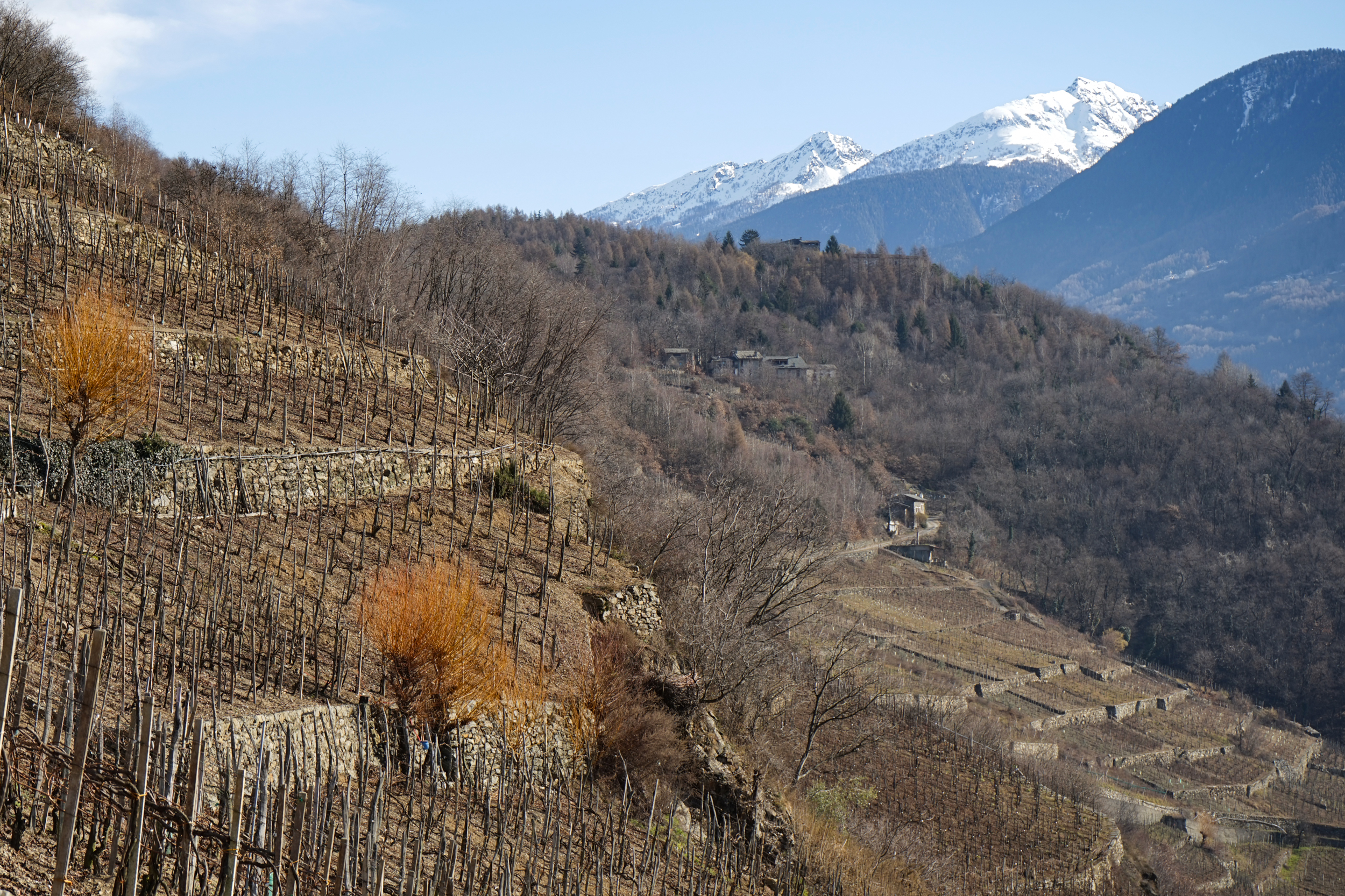
The terraces on the Rhaetian mountainside look South, they welcome energy and sunlight, they are influenced by the wind, the lake breeze and the alpine climate.
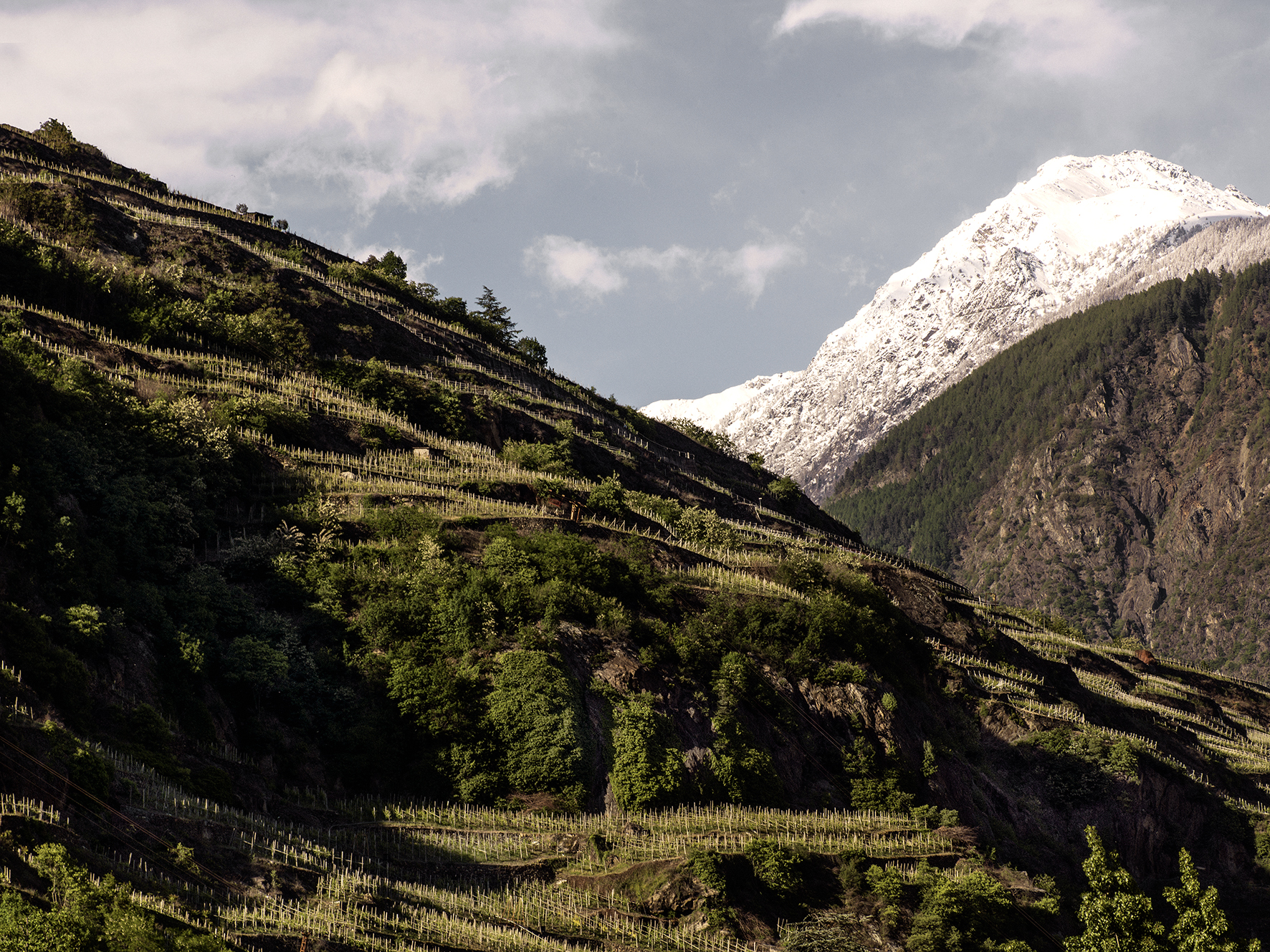
Valtellina, Nebbiolo from the Alps
